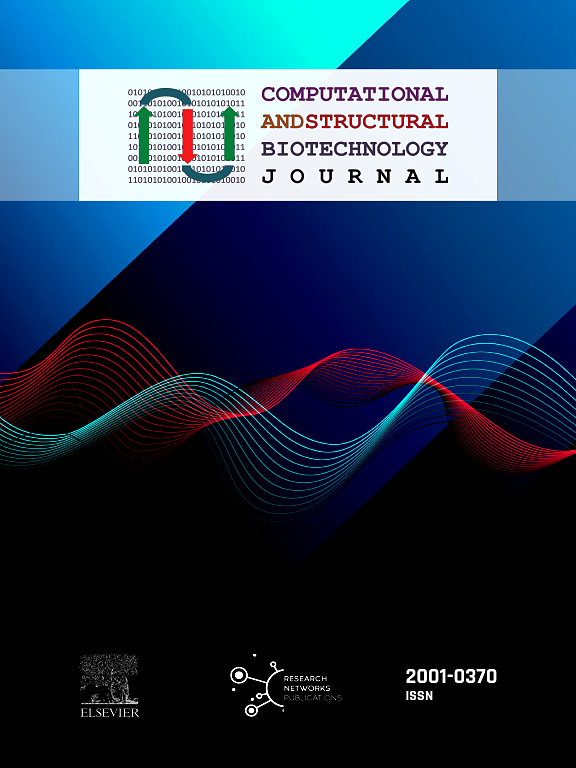纳米生物累积:通过 Enalos DIAGONAL 云平台模拟纳米材料在土壤和水生无脊椎动物中的吸收和生物累积性
IF 4.4
2区 生物学
Q2 BIOCHEMISTRY & MOLECULAR BIOLOGY
Computational and structural biotechnology journal
Pub Date : 2024-10-17
DOI:10.1016/j.csbj.2024.09.028
引用次数: 0
摘要
NanoBioAccumulate 是一种基于网络的免费工具,托管在 Enalos DIAGONAL 云平台 (https://www.enaloscloud.novamechanics.com/diagonal/pbpk/) 上,用户可以使用两种常见的一阶单室生物动力学模型来模拟和预测土壤和水生无脊椎动物对纳米材料 (NMs) 的吸收和生物累积。NanoBioAccumulate 提供了一种方法,可通过非线性拟合功能全面分析不同形式的纳米材料动力学,将其与环境归宿模型相结合,并考虑重要的生理过程。NanoBioAccumulate 克服了需要事先了解与生物动力学模型相关的动力学速率常数的限制,无需外部统计分析软件,因为它通过应用非线性回归,利用用户提供的实验数据,量化了动力学速率常数和其他常数。此外,NanoBioAccumulate 还采用了调整后的 R 平方和偏差校正后的 Akaike 信息标准等统计分析措施,可评估两种不同生物动力学模型的拟合优度,帮助确定特定纳米形式及其被特定无脊椎动物吸收动力学的最佳模型。该工具还包括从文献中检索到的模型情景,涉及研究土壤和水生无脊椎动物暴露于各种类型的纳米介质(如 TiO2、SiO2、C60、石墨烯、氧化石墨烯 (GO)、金、银及其离子控制 AgNO3)的情况。这些模型方案旨在加深对不同 NM 种类所表现出的吸收和消除速率的理解。NanoBioAccumulate 具有先进的集成功能,通过广泛的应用编程接口 (API) 实现。该功能促进了与其他软件和网络应用程序的高效数据交换和互操作性,极大地扩展了其在研究、监管风险评估以及环境监测和监控方面的用途。NanoBioAccumulate 中包含一个用户友好型图形用户界面 (GUI),通过简化复杂任务和消除对编程熟练度的需求,极大地改善了整体用户体验,从而将该工具的适用范围扩大到环境研究、监测和监管等各个领域的不同用户。本文章由计算机程序翻译,如有差异,请以英文原文为准。
NanoBioAccumulate: Modelling the uptake and bioaccumulation of nanomaterials in soil and aquatic invertebrates via the Enalos DIAGONAL Cloud Platform
NanoBioAccumulate is a free-to-use web-based tool hosted on the Enalos DIAGONAL Cloud Platform (https://www.enaloscloud.novamechanics.com/diagonal/pbpk/) that provides users with the capability to model and predict the uptake and bioaccumulation of nanomaterials (NMs) by soil and aquatic invertebrates using two common first-order one-compartment biokinetic models. NanoBioAccumulate offers an approach for comprehensively analyzing the kinetics of different forms of NMs via a nonlinear fitting feature, integrating them with environmental fate models, and considering important physiological processes. NanoBioAccumulate overcomes the constraint of requiring prior knowledge of kinetic rate constants associated with the biokinetic models and eliminates the need for external statistical analysis software as it quantifies the kinetic rate constants and other constants through the application of nonlinear regression, using user-provided experimental data. Furthermore, NanoBioAccumulate incorporates statistical analysis measures like the adjusted R-squared and the bias-corrected Akaike information criterion, allowing for assessment of the goodness-of-fit of the two different biokinetic models, assisting in the identification of the best-performing model for a specific nanoform and its uptake kinetics by a specific invertebrate. The tool also includes model scenarios, retrieved from literature, which involve examining the exposure of soil and aquatic invertebrates to various types of NMs such as TiO2, SiO2, C60, graphene, graphene oxide (GO), Au, Ag and its ionic control AgNO3. These model scenarios aim to enhance understanding of the uptake and elimination rates exhibited by different NM-species. NanoBioAccumulate features advanced integration capabilities, enabled by an extensive Application Programming Interface (API). This functionality promotes efficient data exchange and interoperability with other software and web applications, significantly expanding its utility in research, regulatory risk assessment and environmental surveillance and monitoring contexts. The inclusion of a user-friendly Graphical User Interface (GUI) in NanoBioAccumulate greatly improves the overall user experience by simplifying complex tasks and eliminating the need for programming proficiency, thereby expanding the tool's applicability to a diverse range of users across various fields such as environmental research, monitoring, and regulation.
求助全文
通过发布文献求助,成功后即可免费获取论文全文。
去求助
来源期刊

Computational and structural biotechnology journal
Biochemistry, Genetics and Molecular Biology-Biophysics
CiteScore
9.30
自引率
3.30%
发文量
540
审稿时长
6 weeks
期刊介绍:
Computational and Structural Biotechnology Journal (CSBJ) is an online gold open access journal publishing research articles and reviews after full peer review. All articles are published, without barriers to access, immediately upon acceptance. The journal places a strong emphasis on functional and mechanistic understanding of how molecular components in a biological process work together through the application of computational methods. Structural data may provide such insights, but they are not a pre-requisite for publication in the journal. Specific areas of interest include, but are not limited to:
Structure and function of proteins, nucleic acids and other macromolecules
Structure and function of multi-component complexes
Protein folding, processing and degradation
Enzymology
Computational and structural studies of plant systems
Microbial Informatics
Genomics
Proteomics
Metabolomics
Algorithms and Hypothesis in Bioinformatics
Mathematical and Theoretical Biology
Computational Chemistry and Drug Discovery
Microscopy and Molecular Imaging
Nanotechnology
Systems and Synthetic Biology
 求助内容:
求助内容: 应助结果提醒方式:
应助结果提醒方式:


